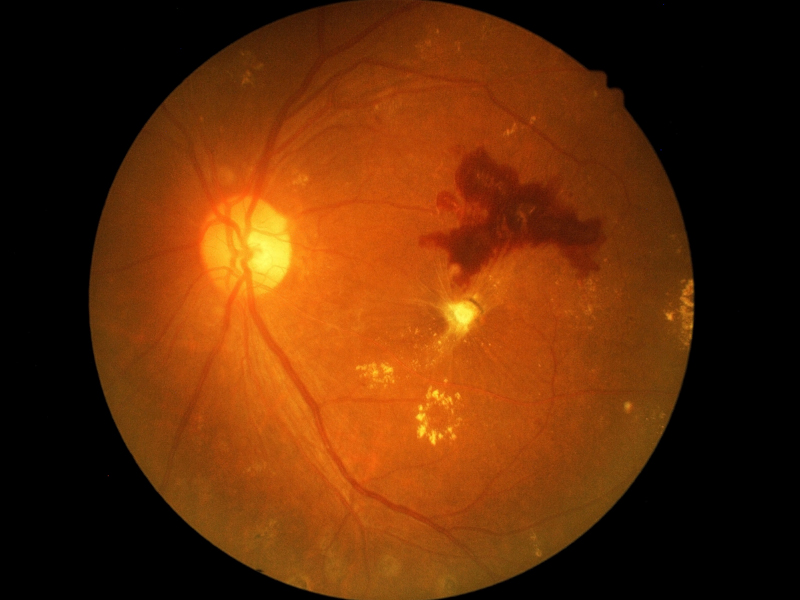
Keeping Your Eyes Healthy – Diabetic Retinopathy
Diabetes affects approximately 1 out of every 11 people in the United States. In fact, according to the CDC (Centers for Disease Control), 1 out of every 4 of those with the condition do not even know that they have it. This is because diabetes, along with its effects on the eyes, produce no symptoms at early stages.
Diabetes is a disease in which the body can no longer properly process food for energy. Due to this, glucose (the body’s form of cellular energy) builds up in the blood stream. The chronic build up of glucose in the bloodstream damages blood vessel walls thus restricting blood flow. This eventually damages organs, including the eyes.
Diabetic eye disease is a group of conditions that, in severe stages, can cause blindness. Risk factors include the duration that the person is diabetic, blood glucose control, other cardiovascular diseases and smoking. The most common type of diabetic eye disease is diabetic retinopathy. This is classified into subgroups: non-proliferative or proliferative.
In non-proliferative diabetic retinopathy, damage to the blood vessels cause them to leak and close off inside of the eye, specifically in the retina. This area of the eye contains the cells that help us see, therefore this condition can lead to vision loss. In the case of proliferative diabetic retinopathy, the lack of proper blood flow induces the body to produce new blood vessels. These new blood vessels leak even more and lead to scarring. This further damages the retina.
Many large clinical studies have been conducted on diabetic eye disease. The ETDRS study (Early Detection of Diabetic Retinopathy Study) and ACCORD (Action to Control Cardiovascular Risk in Diabetes) study are large clinical studies to determine the best control and treatment options for patients with diabetic eye disease. These studies have defined the severity of the disease, risk level at varying stages, and best treatment option at these stages.
Another important study, the DCCT (Diabetes Control and Complications Trial), demonstrated the importance of controlling blood glucose in the prevention of diabetic eye disease. In this study is was demonstrated that a decrease in the patient’s HbA1C by 10% was able to lessen the risk of diabetic retinopathy by about 44% on average.
Your primary care physician can give you the value of your HbA1C, you should be familiar with what it is, and the best ways to keep this value within normal range. In addition, eye examinations with your optometrist are vital in order to detect diabetic eye disease. Maintaining routine eye examinations will help save your sight by providing early detection in this ‘silent’ disease process and by allowing proper intervention to minimize any impact on your vision.
Follow #takecareofyoureyes on Facebook and Twitter for more diabetic retinopathy facts.
Sources: Dr. Kendra Cunegin, O.D., cdc.gov, N Engl J Med 2015
I didn’t know that diabetes could also damage your eyes as well as other organs. My dad has diabetes. We will have to make sure that he is taking care of himself so he doesn’t hurt his eyes. I’m glad that there have been a lot of studies conducted on diabetic eye disease and there are treatment options for it. Thank you for the information!
Hi Deb! Sorry we are just seeing this. We appreciate your comment and hope that it can help you, as well as your father. Thanks for stopping by.